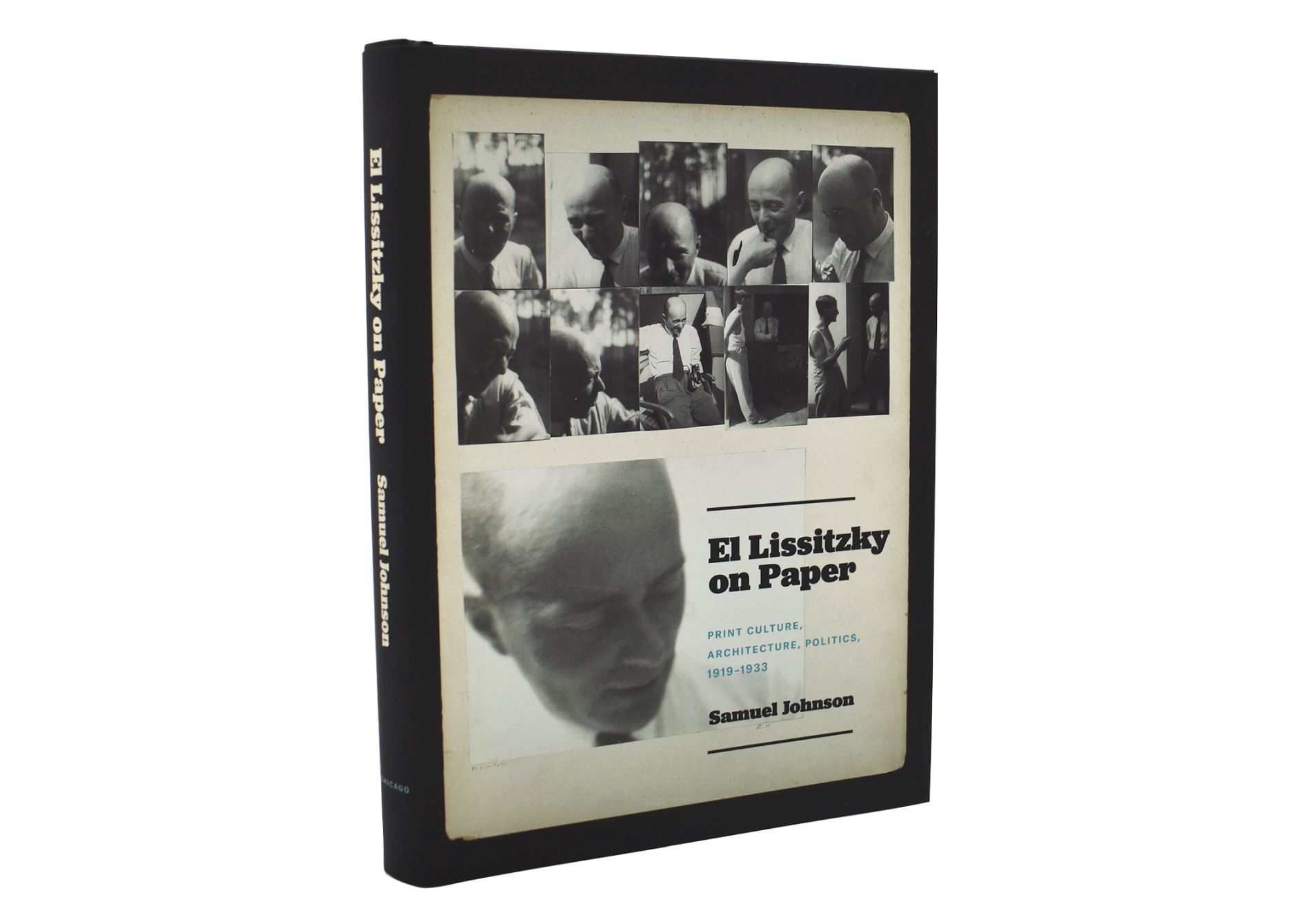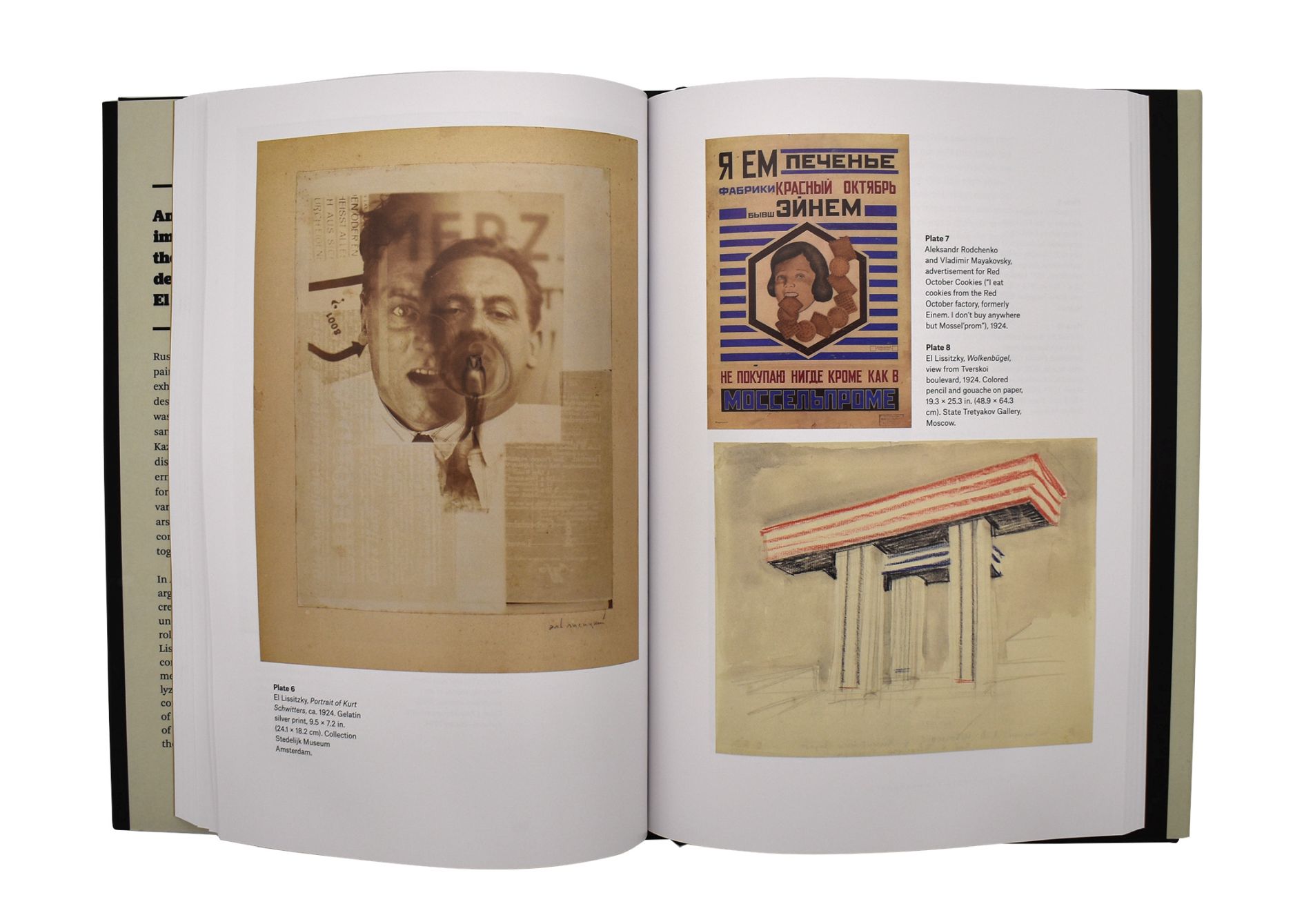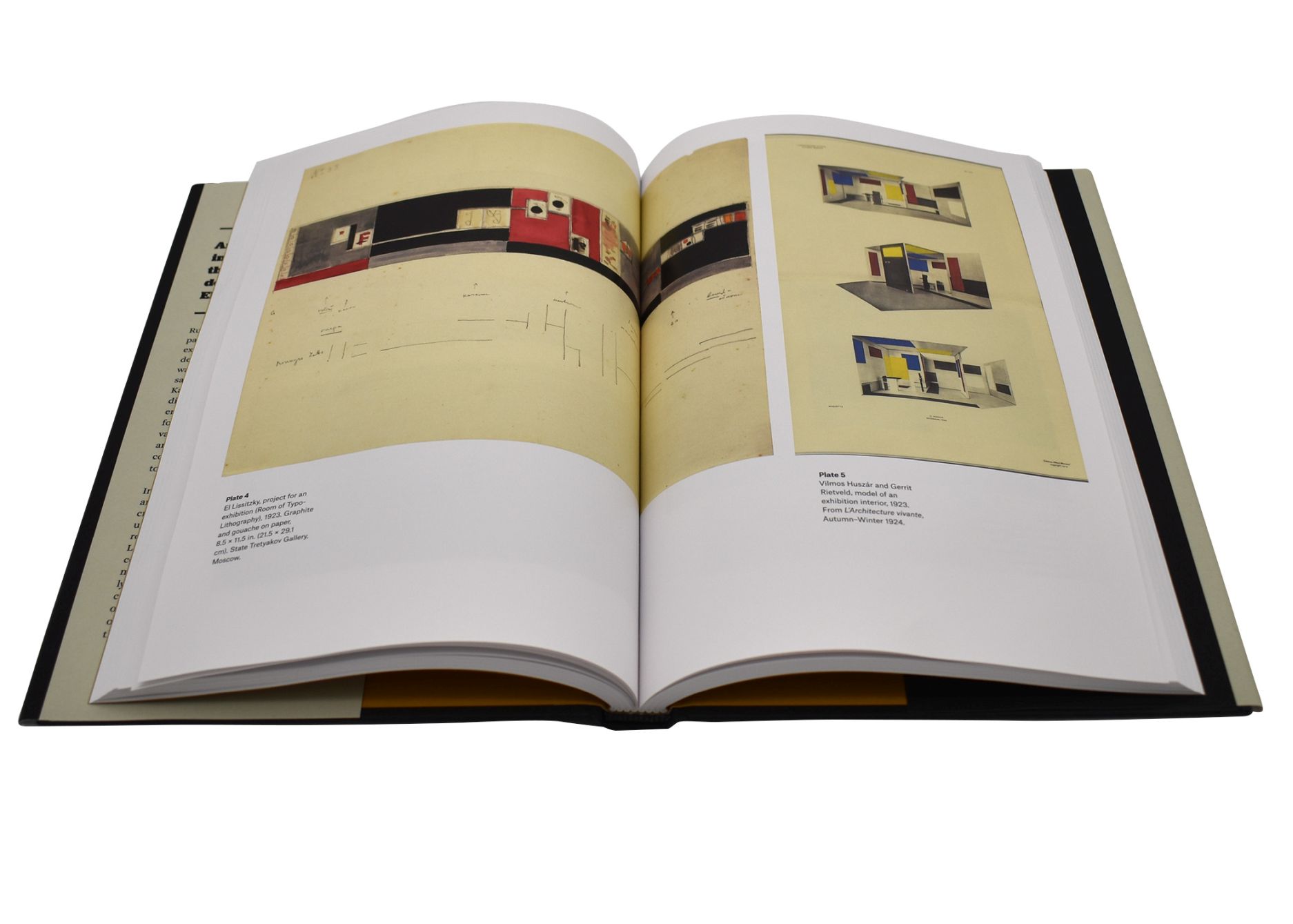El Lissitzky on Paper
Print Culture, Architecture, Politics, 1919–1933
An examination of the importance of paper in the work of Soviet artist, designer, and architect El Lissitzky.
Russian artist El Lissitzky’s work spans painting, photography, theatrical and exhibition design, architecture, graphic design, typography, and literature. He was active in the Jewish cultural renaissance, formed an artists’ collective with Kazimir Malevich, was a key figure in the dissemination of early Soviet art in Western Europe, and designed propaganda for the Stalin regime. With such a varied history and body of work, scholars have often struggled to identify the core principles that tied his diverse oeuvre together.
In El Lissitzky on Paper, Samuel Johnson argues that Lissitzky’s commitment to creating works on paper is a constant that unites his endeavors. Paper played a key role in the utopian projects that informed Lissitzky’s work, and the artist held a commitment to print as the premier medium of immediate public exchange. Johnson analyzes and contextualizes this idea against the USSR’s strict management of this essential resource and the growth of new media communications, including the telephone, telegraph, and film.
With this book, Johnson presents a significant contribution to scholarship on this major artist, revealing new connections between Lissitzky’s work in architecture and visual art and bringing to light sources from largely unstudied Russian archives.
Russian artist El Lissitzky’s work spans painting, photography, theatrical and exhibition design, architecture, graphic design, typography, and literature. He was active in the Jewish cultural renaissance, formed an artists’ collective with Kazimir Malevich, was a key figure in the dissemination of early Soviet art in Western Europe, and designed propaganda for the Stalin regime. With such a varied history and body of work, scholars have often struggled to identify the core principles that tied his diverse oeuvre together.
In El Lissitzky on Paper, Samuel Johnson argues that Lissitzky’s commitment to creating works on paper is a constant that unites his endeavors. Paper played a key role in the utopian projects that informed Lissitzky’s work, and the artist held a commitment to print as the premier medium of immediate public exchange. Johnson analyzes and contextualizes this idea against the USSR’s strict management of this essential resource and the growth of new media communications, including the telephone, telegraph, and film.
With this book, Johnson presents a significant contribution to scholarship on this major artist, revealing new connections between Lissitzky’s work in architecture and visual art and bringing to light sources from largely unstudied Russian archives.
248 pages | 10 color plates, 79 halftones, 1 line drawings | 7 x 10 | © 2024
Architecture: European Architecture
Reviews
Table of Contents
Note on Transliteration
Introduction
1. UNOVIS: Utopian or Scientific?
Of 2 Squares: An UNOVIS Primer
Contest of the Faculties: The Proletkult Purge and the Founding of VKhUTEMAS
Proun: Toward a New Body
2. The International Set
Veshch’ Objet Gegenstand and the Economic Question
From Destruction to Demonstration: Prouns Space in Circulation
Set/Reset: Orientation and the Everyday
Installation: The Room of Typo-Lithography
3. Still Movements
Ghosts of Production: Old Novelties Reviewed
Imaginary Constructions: Film and the Unity to Come
Irrational Desires: Reckoning with Advertising
4. Typographical Architecture
Playing Against Type: The Wolkenbügel as Historical Monument
A Visiting Card for Moscow: Transit, Communication, and the Production of Space
Orientation and the Mobile Viewer
5. Toward an Agitation-Environment
Compromise Formations: The All-Union Polygraphics Exhibition
Archaism as Renewal: Photo-painting
International Review: Pressa, Politics, and the End of NEP
6. The Image Complex
The Ogonek Printing Works: A Structure in Flux
The Printer’s View
Converting Currents: Dneprostroi in Pictures
Afterword
Acknowledgments
Notes
Illustration Credits
Index
Introduction
1. UNOVIS: Utopian or Scientific?
Of 2 Squares: An UNOVIS Primer
Contest of the Faculties: The Proletkult Purge and the Founding of VKhUTEMAS
Proun: Toward a New Body
2. The International Set
Veshch’ Objet Gegenstand and the Economic Question
From Destruction to Demonstration: Prouns Space in Circulation
Set/Reset: Orientation and the Everyday
Installation: The Room of Typo-Lithography
3. Still Movements
Ghosts of Production: Old Novelties Reviewed
Imaginary Constructions: Film and the Unity to Come
Irrational Desires: Reckoning with Advertising
4. Typographical Architecture
Playing Against Type: The Wolkenbügel as Historical Monument
A Visiting Card for Moscow: Transit, Communication, and the Production of Space
Orientation and the Mobile Viewer
5. Toward an Agitation-Environment
Compromise Formations: The All-Union Polygraphics Exhibition
Archaism as Renewal: Photo-painting
International Review: Pressa, Politics, and the End of NEP
6. The Image Complex
The Ogonek Printing Works: A Structure in Flux
The Printer’s View
Converting Currents: Dneprostroi in Pictures
Afterword
Acknowledgments
Notes
Illustration Credits
Index




